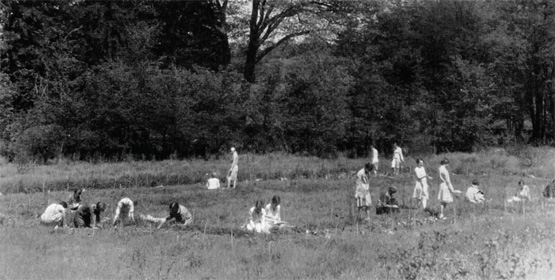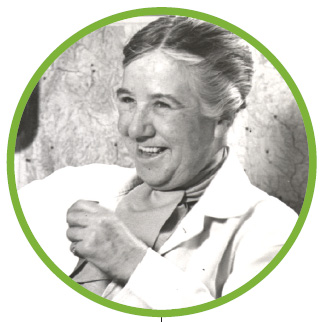Edith Roberts: A Haven for Native Plants

The word “ecology” may seem to have rather suddenly intruded upon the world’s consciousness circa 1970, but at Vassar, Edith Adelaide Roberts, professor of plant science, was popularizing the term—and studying the interrelationship between organisms and their environment—half a century earlier.
In addition, it was Roberts who proved (along with fellow Plant Science faculty member Mildred Southwick, in a 1948 paper presented to the Electron Microscope Society of America) that young green and yellow plants are the original source of vitamin A. “This being so,” the New York Times reported, “fish livers can no longer be regarded as the main source of vitamin A.” Later generations who have been spared doses of cod liver oil, preferring instead to get this vital nutrient from carrots or spinach, have reason to be grateful to Roberts.
The pioneering ecologist and eminent scientist started life as a farmer’s daughter in Rollinsford, New Hampshire, where she was born in 1881. She received an AB from Smith College in 1905, and an AM and PhD from the University of Chicago. After serving three years as an associate professor at Mount Holyoke, Roberts worked as a field representative for the U.S. Department of Agriculture during the First World War, traveling throughout the 48 states, advising women who were managing farms while their men were away in the service. But Roberts once told an interviewer that she thought “all women [who are] going to run a family should have plant science. It is basic to living.”

She was appointed associate professor of botany at Vassar in 1919; two years later, she was made a full professor and chairman of the department which, at her suggestion, was renamed Plant Science.
One of Roberts’s top priorities as head of Plant Science was the creation of the Dutchess County Outdoor Ecological Laboratory, the first of its kind in the country. A 1948 article in the Poughkeepsie New Yorker states, “At its start, the laboratory comprised four acres of poison ivy, two oak trees and a gleam in the eyes of Vassar plant scientists. Specifically, it was a plot of waste land lying between Raymond avenue, [sic], at the point where Skinner hall now stands, the New England building and the Vassar farms.”
Under Roberts’s guidance, and thanks to her determination (“Sometimes the department’s meager funds were supplemented by outside lectures given by Miss Roberts”), the outdoor laboratory grew to the point that it contained “nearly all of the 2,000 or more plants that are native to Dutchess county, growing under the natural conditions of soil, light, temperature, and moisture.”
Roberts’s Outdoor Ecological Laboratory soon will rise again in a 21st century iteration. The very same land, surrounding the Fonteyn Kill between Olmsted Hall and Skinner Hall, will be renewed and expanded as an outdoor learning space as part of Vassar’s new Integrated Science Center. This past summer, Vassar students helped to remove invasive species from the area and to relocate native plants to the Ecological Preserve on the Vassar Farm. It is an appropriate tribute to the professor who made “ecology” a common term at the college long before it was popularized beyond Taylor Gate.
